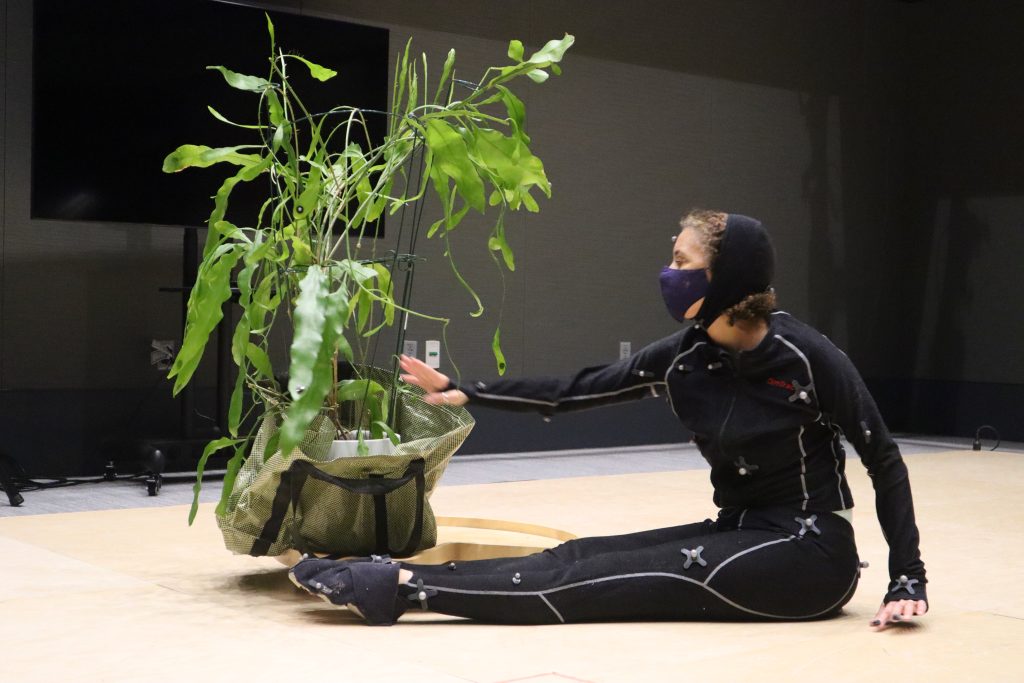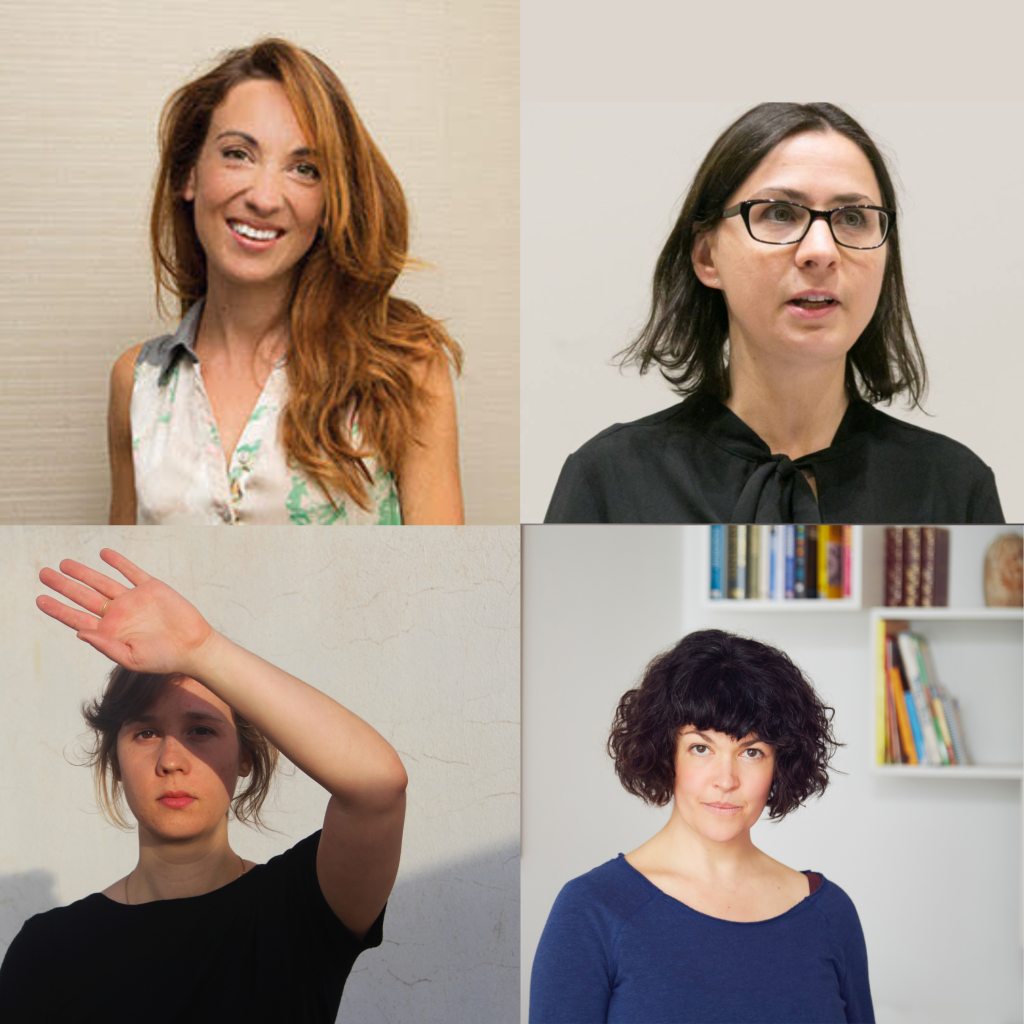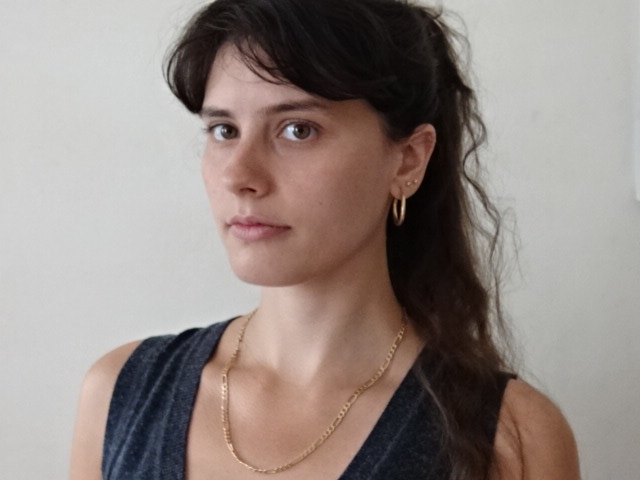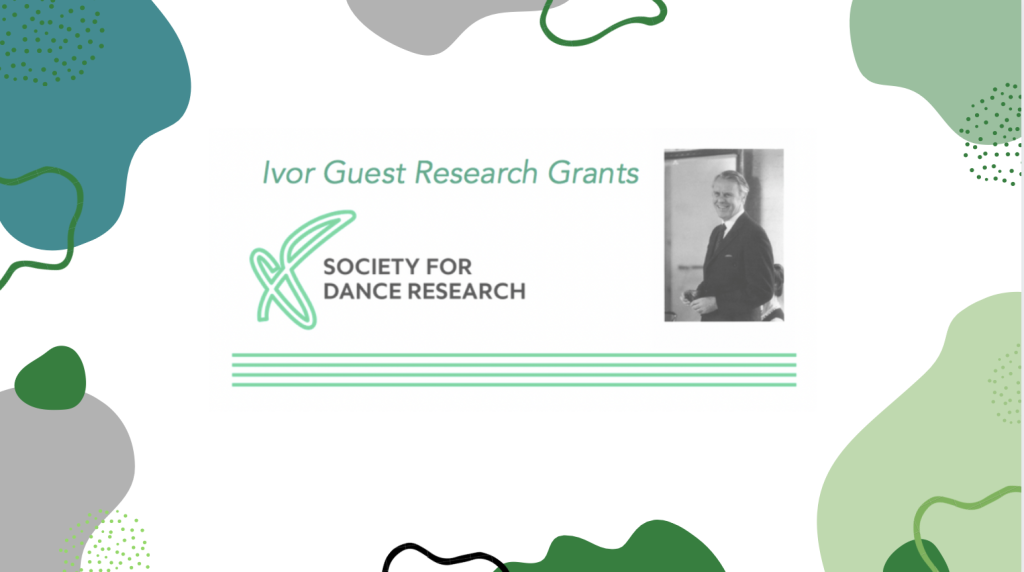
Space + Dance + Digital (S+D2) by Adesola Akinleye
S+D2 is a dance project creating choreography accessed through the immersive digital platform of AR. AR allows the performance experience to be shared and responded to by people digitally coming together across geographic, political, language and social barriers. Part of the research impetus is to ask what does it mean artistically for dance to take advantage of the physical boundary crossing of digital space? The project develops preliminary research by Akinleye and Preciado-Azanza
Mapping Atlantic (Im)mobilities: Guyanese komfa communities – Clare Parfitt
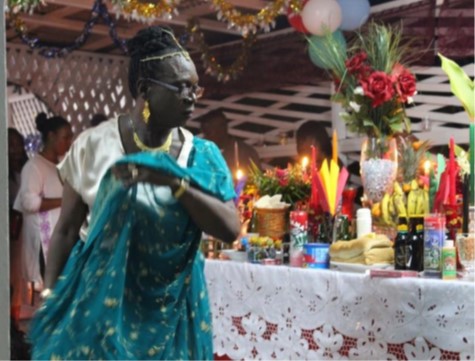
This project aims to develop connections with communities in Guyana who practice komfa, a Black Atlantic religion that cultivates relationships with ancestors through dance, drumming, altar-making, water offerings and spirit possession. The Ivor Guest Research Grant will fund a two-week research trip to Guyana in July/August 2023. I will attend events staged by komfa practitioners, focusing particularly on the dance-orientated communities of St. Paul’s Spiritual Baptist Church, Bagotstown, and the House of Love, Mocha.
The research trip to Guyana is part of a longer project titled ‘Mapping Atlantic (Im)mobilities: Caribbean dance communities in London and their diasporic connections’, conceived in collaboration with Dr Celena Monteiro and the participant communities. It asks how Guyanese and French Caribbean grassroots dance groups on both sides of the Atlantic are responding to this historical moment of intersecting international, European and national crises, such as Covid, Black Lives Matter, Brexit and the Windrush scandal. This research aims to support community members in envisaging collective responses to crisis that centre their own needs and desires.
The project employs Participatory Action Research methodologies which empower participants as co-researchers “to ask critical questions about the systems and practices that shape their lives, and to imagine – through research – how they might be otherwise” (Fine and Torre, 2021, p. 3). Through these methods, the project aims to create decolonised spaces and opportunities that support the expression, vitality and longevity of participating Caribbean dance communities. In Guyana, the komfa community often experiences stigmatisation due to the denigration of African culture which continues to pervade Guyanese value systems over fifty years after the country gained independence from British colonial rule. The research trip to Guyana will clarify the needs and desires of Guyanese stakeholders and build the Guyanese component of the Participatory Action Research collective for the next stage of the project.
enDurANCE, a guest podcast series on DanceOutsideDance – Daniela Perazzo
enDurANCE is a mini-series, hosted by podcast of interdisciplinary conversations DanceOutsideDance. It focuses on dialogues with independent artists exploring how dance questions structures, forges connections and navigates uncertainties. The starting point is the acknowledgement thatdance is currently grappling with the task of rebuilding itself following the hiatus of the Covid pandemic, while also rethinking its practices in relation to the ongoing fight against systemic forms of discrimination, the global ecological crisis and administrative and financial readjustments post-Brexit. Guest host Daniela Perazzo and invited artists co-create a dialogical space in which to reflect on how dance keeps going through unstable times, how it endures adversity and precarity. Conceived as an invitation to imagine, unlearn and re-learn how dance may respond to the present moment, the mini-series engages with independent artists who operate at the margins of the dance industry, offering generative perspectives on how dance can endure adversity. The episodes will be produced and curated in collaboration with the creators of the DanceOutsideDance podcast: Julia Pond, Laura Colomban and Michaela Gerussi.
Chisenhale Dance Space on film – Rachael Davies
My doctoral research examines the formation and early history of Chisenhale Dance Space within the context of its social, political and cultural environment of 1980s Britain. This analysis is primarily supported by Chisenhale’s collection of archival material and thus my research also considers the role of the archive in historiography. The Ivor Guest Research Grant will be used to digitalise a collection of archival footage documenting Chisenhale Dance Space’s work and activities from the 1980s. It will also support the development of a public screening programme making use of the newly digitalised films.
Choreographing Immersion: Negotiating Borders, Difference and Power – Thea Stanton
Immersive performances have been increasing over the past 15 years, yet with the blurring of performer/audience borders and boundaries, concerns regarding consent and power have emerged. This project will explore how the creation of immersion through a choreographic embodied lens could help address these concerns. Drawing on my hybrid Indigenous LatinX heritage and critical phenomenology in conjunction with movement practices embracing decentralized decision-making and inter-subjective awareness, this project offers a re-framing of immersion as a dynamic relational process, rooted in borderland experiences, that enables different bodies to encounter one another and become part of an immersive experience.
Salpêtrière’s Ball of Mad Women: 19th Century French Social Dance and the Institutionalization of Gender and Disability – Laura Smith
How did performance help legitimize the emerging field of psychiatry in the 19th century? What was the role of dance in developing a diagnosis of madness? How were performances of dance and gender used to measure the effectiveness of newly codified medical treatments? These are the questions that my proposed project seeks to answer through archival research on 19th century social dancing at Hôpital Salpêtrière.
In late 19th century Paris, the bourgeoisie anxiously awaited their invitation to the city’s most exclusive social event—le Bal des folles, or the Ball of Mad Women. The annual ball took place inside Hôpital Salpêtrière and was hosted by the women institutionalized there. As part-women’s hospital, part-psychiatric institution, and part-prison for women working in prostitution, the specter of Salpêtrière and its’ marginalized inhabitants loomed large in the “popular Parisian imagination.”
This research project proposes that Salpêtrière’s Ball of Mad Women—where institutionalized madness was performed within the context of a bourgeoisie social dance—is a significant historical site for understanding the relationship of dance to the construction of gender and disability. This era of medicine located madness in the body, rather than the mind, and treatment centered on disciplining the physical self into social choreography. Salpêtrière’s patients’ “madness” was demonstrated through the unruliness of their bodies within the public sphere—a literal break with the choreography. Through close examination of Salpêtrière’s Ball of Mad Women, this research project questions how a late 19th century woman’s inability or unwillingness to discipline herself into social choreography recast her as mad.
